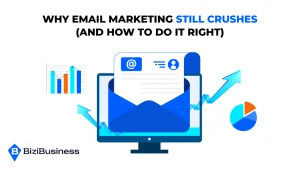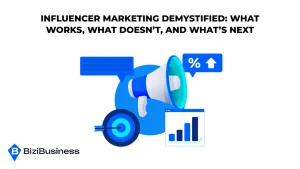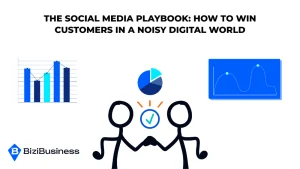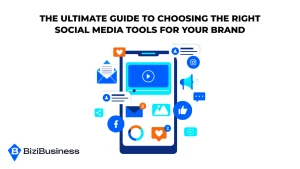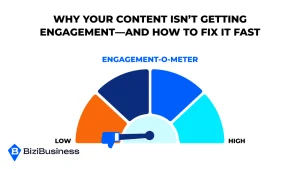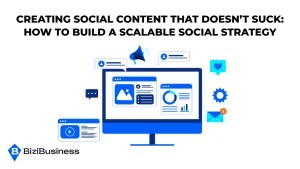BiziTopics
From Storytelling to Sales: How Native Ads Can Captivate Audiences
BiziBusiness
Jul 8, 2025
22 min read
Picture this:
You’re scrolling through your favorite news site, skimming headlines, catching up on the latest stories. Suddenly, an ad pops up—loud, flashy, completely unrelated.
You ignore it. Maybe even feel annoyed.
Now imagine instead you see a sponsored post that blends right into the content. It feels like just another interesting article—until you realize it’s an ad. But by then, you’re hooked.
That’s the difference between traditional advertising and native advertising.
Native ads don’t scream for attention. They earn it by seamlessly blending in with the content people are already interested in. Instead of disrupting the user experience, they enhance it—by providing value, telling a story, or offering insights that feel relevant.
And in a digital landscape where audiences are increasingly ad-blind and skeptical, native advertising is your best chance to cut through the noise without being intrusive.
In this guide, you’ll learn:
- What native ads are and why they matter
- How to create native ads that feel like content, not clickbait
- The platforms where native ads thrive
- How to measure success and avoid common pitfalls
By the end, you’ll know how to craft native ad campaigns that capture attention without sacrificing authenticity—turning storytelling into sales.
What Are Native Ads (And Why Should You Care?)
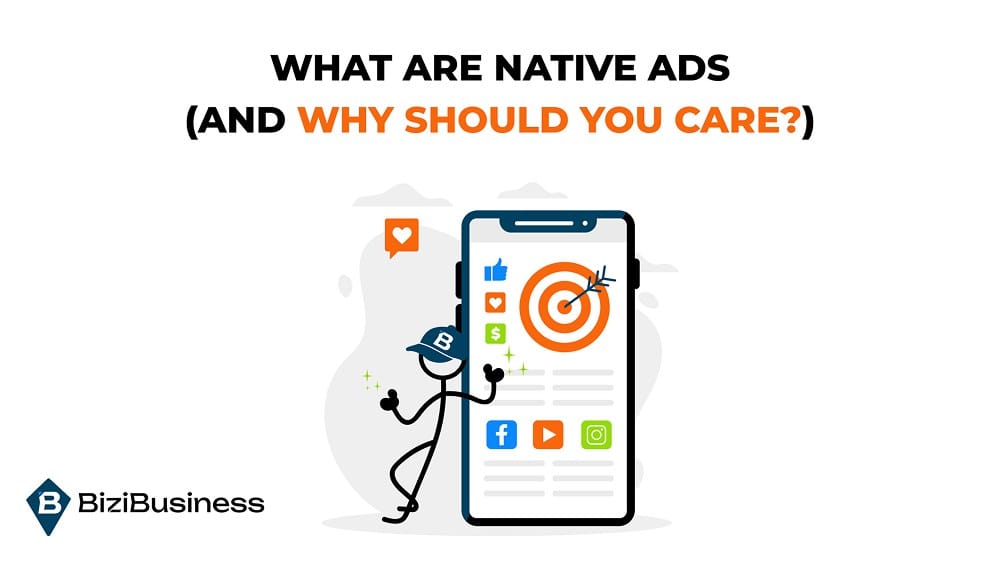
We live in a world of ad fatigue.
People are bombarded with banners, pop-ups, and flashy videos that scream, “Buy now!”
The result?
Audiences tune out. They scroll faster. They install ad blockers.
But native ads?
They do the exact opposite. They don’t demand attention—they earn it.
Definition:
Native ads are paid content that matches the look, feel, and function of the platform where they appear.
In other words, they blend in.
They look like organic content, whether that’s a social media post, a news article, or a recommended video. But make no mistake—they’re still ads, just delivered in a way that doesn’t disrupt the user experience.
How Native Ads Differ from Traditional Ads
Traditional Ads:
- Stand out as blatant promotions
- Often feel like interruptions
- Can seem pushy or irrelevant
- Tend to trigger ad blindness
Native Ads:
- Integrate naturally with surrounding content
- Provide value or entertainment
- Feel more like a recommendation than a pitch
- Are seen as less intrusive and more trustworthy
Think of native ads as chameleons. They adapt to their environment, making them harder to ignore—and more likely to engage.
Why Native Ads Are Gaining Popularity
People don’t want to be sold to—they want to be engaged.
And that’s why native ads are becoming the go-to strategy for brands looking to boost engagement without sacrificing user experience.
Key Benefits:
- Higher Engagement:
- Because they blend in, native ads are more likely to be read or viewed compared to traditional display ads.
- Better Click-Through Rates (CTR):
- Studies show that native ads can achieve up to 8.8x higher CTR than typical display ads.
- Improved Brand Perception:
- Users don’t feel “sold to”—they feel informed. This fosters trust and builds credibility.
- Platform Versatility:
- From social feeds to editorial sites, native ads can appear in many forms, fitting naturally wherever they’re placed.
Why Native Ads Work: The Power of Subtlety
When your ad feels like content, people actually pay attention.
Think about the last time you saw a traditional ad online.
Did you click it?
Or did you scroll right past—barely noticing it was there?
That’s the reality for most online advertising today.
People are tired of being shouted at. They’re done with flashy, disruptive banners. They’ve seen enough hard-sell messages.
Native ads? They take a different approach.
Instead of demanding attention, they quietly earn it.
The Psychology Behind Native Ads: Why They’re So Effective
Humans are naturally drawn to stories, not sales pitches.
We lean in when something feels relevant, interesting, or useful.
And that’s why native ads work—they don’t scream “buy this.”
They blend into the content the audience is already engaging with.
Here’s why subtlety wins:
- They Feel Natural:
- Native ads mimic the content around them, so they don’t set off the brain’s “ad alarm.”
- Whether it’s an article, a social post, or a video, the ad feels like it belongs.
- They Respect the User Experience:
- Instead of disrupting what someone is doing, they flow with it.
- Users don’t feel tricked or bombarded—they feel like they’re discovering something organically.
- They Build Trust Through Relevance:
- Native ads are tailored to the platform and audience, making them feel more personalized and less salesy.
- People are more likely to click when the content feels relevant to their interests or needs.
- They Evoke Curiosity Instead of Resistance:
- A native ad that starts with an intriguing headline or a compelling story hook doesn’t just capture attention—it earns it.
- Instead of feeling like a pitch, it feels like a recommendation or a story worth exploring.
The Data Doesn’t Lie: Native Ads Outperform Traditional Ads
Studies consistently show that native ads deliver better engagement than traditional display ads.
Here’s why:
- Click-Through Rates (CTR): Native ads can achieve up to 8.8x higher CTR compared to traditional banner ads.
- Brand Affinity: Users exposed to native ads show a 20-60% higher brand affinity compared to disruptive ads.
- Ad Recall: People remember native ads 3x more than banner ads because they’re more likely to actually read them.
Subtlety Isn’t Weakness—It’s Strategic
It might seem counterintuitive at first:
Why would an ad that doesn’t “push” the product work better?
Here’s the answer:
People are wired to resist being sold to.
But they’re naturally drawn to stories, solutions, and recommendations.
By making your ad feel like part of the content journey—not a break in it—you’re lowering resistance and building genuine interest.
The Elements of High-Converting Native Ads
It’s not just about looking natural—it’s about driving action.
If you’ve ever scrolled through a news site, a social feed, or a content platform, chances are you’ve seen native ads.
But here’s the thing:
Not all native ads are created equal.
Some feel authentic and compelling. Others feel like sneaky clickbait.
The difference?
It’s all in the execution.
High-converting native ads share a few key traits that make them feel engaging, trustworthy, and worth clicking.
Let’s break down the elements that separate the winners from the rest.
1. Storytelling: The Heartbeat of Native Ads
People don’t just buy products—they buy stories.
Native ads that succeed tell a story, rather than just pitching a product.
How to Do It Right:
- Start with a relatable problem or question:
- “Struggling to stay hydrated during workouts?”
- Introduce a solution:
- “Discover how athletes keep their energy up with this one simple trick.”
- Include real-world examples:
- Testimonials, success stories, or data points that make the story credible.
The goal is to make the ad feel like a piece of content that naturally leads to your product—not just a blatant pitch.
2. Relevance: Match the Content and Context
Native ads perform best when they fit the platform they’re on.
That means looking, sounding, and feeling like the organic content around them.
Best Practices:
- Social Feeds: Use conversational tone and hashtags to blend in.
- Editorial Sites: Write like a journalist—fact-based, informative, and engaging.
- Video Platforms: Create short, engaging clips that feel like user-generated content.
Key Tip: Study the native content on your chosen platform and mirror its tone, style, and structure.
3. Transparency: Don’t Trick Your Audience
One of the biggest mistakes brands make is trying to disguise their native ads as purely organic content.
This backfires—big time.
When people feel tricked, they lose trust in your brand.
Instead, be transparent. Make it clear that the content is sponsored, but ensure it still provides value.
How to Build Trust:
- Clearly label the ad: Use phrases like “Sponsored by” or “In Partnership With.”
- Include disclaimers: A small, non-intrusive line that clarifies the relationship.
- Focus on value first: Make sure the ad itself is interesting and informative, regardless of sponsorship.
Think of it this way: Honesty doesn’t hurt conversions—irrelevance and deception do.
4. Visual Appeal: Catch the Eye Without Screaming “Ad!”
Your visuals need to be eye-catching, but not flashy.
Remember, native ads should blend in—so overly polished images or graphics can actually work against you.
How to Nail It:
- Use real, relatable images: Lifestyle shots, candid moments, or simple product demos.
- Match the platform aesthetic: Don’t use slick, studio shots on a platform known for raw, authentic content.
- Keep it simple: One strong image often works better than a collage or graphic overload.
5. Call to Action: Guide the Next Step—Gently
Your CTA should feel like a natural extension of the content.
If it feels abrupt or overly salesy, it breaks the flow and kills engagement.
CTA Examples:
- Content-Driven: “Learn more about staying hydrated”
- Soft Sell: “See how it works”
- Value-Focused: “Discover tips for better workouts”
Avoid: Hard-sell CTAs like “Buy Now!” or “Shop Today!” unless the context clearly supports it.
6. Personalization: Speak to Your Audience Directly
Native ads that feel personal and relevant are far more effective than generic promotions.
Leverage audience data to create ads that speak to specific needs or preferences.
How to Personalize:
- Segment by demographics: Tailor the message for different age groups or interests.
- Use dynamic content: Adapt headlines and visuals based on the user’s previous interactions.
- Incorporate data-driven insights: Reference trends or data points that resonate with your target audience.
Crafting Native Ads That Feel Like Content (Not Clickbait)
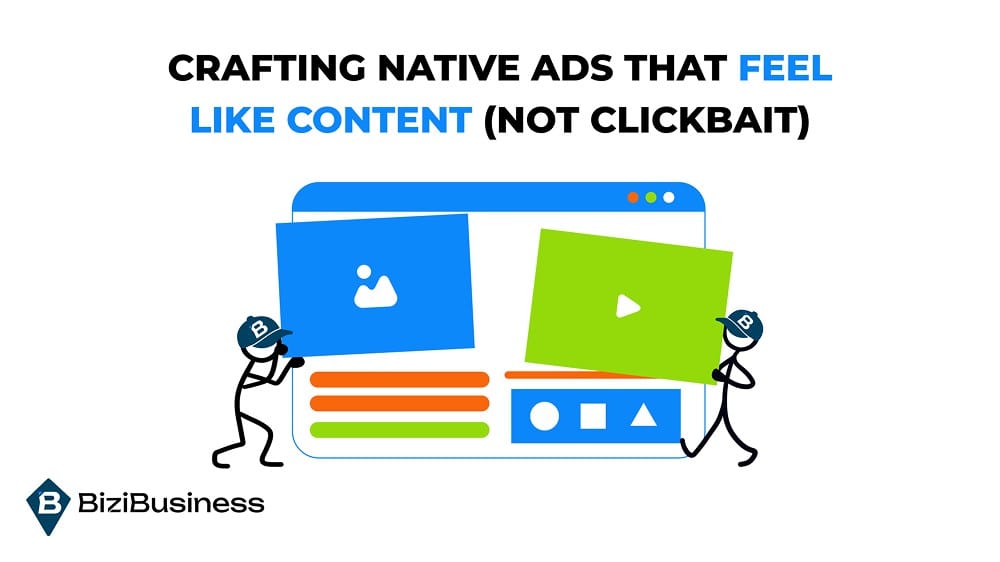
Because nobody likes to feel tricked.
Here’s the thing about native ads:
They work because they blend in.
But if they feel deceptive—like a bait-and-switch—the audience won’t just ignore them. They’ll lose trust in your brand.
The goal is to intrigue—not mislead.
Native ads should feel like an invitation, not a trap.
Let’s talk about how to create native ads that genuinely engage without making users feel duped.
What Makes an Ad Feel Like Clickbait?
Clickbait has a very distinct feel. It overpromises, lacks context, and often disappoints.
Signs of Clickbait:
- Sensational headlines that don’t match the content
- Misleading claims (“You Won’t Believe What Happened Next!”)
- Out-of-context images designed solely for shock value
- Abrupt transitions from content to a hard sell
- Content that doesn’t deliver on the headline’s promise
Clickbait might generate clicks, but it kills credibility. And when trust goes down, so do your conversions.
How to Make Your Native Ads Feel Like Content (Not Clickbait)
1. Start with a Clear, Honest Headline
Headlines set the tone. If your headline screams “Ad!” or feels too good to be true, users will scroll past—or worse, feel duped after clicking.
Good Example:
- Informative: “5 Simple Ways to Stay Hydrated During Your Workout”
- Curiosity-Driven: “Why Athletes Are Swapping Their Usual Protein Shakes”
- Solution-Oriented: “The Hydration Hack That Keeps You Going Longer”
Key Tip: Make sure the body content delivers on the headline’s promise.
2. Lead with Value, Not Promotion
Your first few sentences should feel informative, not salesy. Hook readers with a relatable problem or an interesting fact.
Example:
- Problem: “Staying hydrated during a long run is a challenge many athletes face. Dehydration doesn’t just slow you down—it can cut your workout short.”
- Solution: “Here’s how you can keep your energy up without constantly reaching for your water bottle.”
By focusing on the reader’s challenge, you position your product as part of the solution without coming off as pushy.
3. Be Transparent About Sponsorship
People appreciate honesty. Clearly labeling your native ad as sponsored content actually increases trust.
How to Do It Right:
- Use labels like “Sponsored by [Brand]” or “In Partnership With”
- Include a brief intro that explains the partnership:
- “This content is brought to you by [Brand], committed to helping you stay hydrated and perform your best.”
Transparency doesn’t reduce engagement—it builds credibility.
4. Use Real Stories and Testimonials
People connect with stories. Real-world examples or customer testimonials make the ad feel relatable and credible.
Example:
- “When Sarah started using our hydration formula, she noticed she could run longer without feeling fatigued. ‘It’s like I’ve finally found my running rhythm,’ she says.”
Personal stories make your message feel authentic—and that makes it more impactful.
5. Make the Call to Action Subtle but Clear
A good native ad doesn’t end with “BUY NOW!”
Instead, guide the reader to the next step in a way that feels natural.
Soft Sell CTAs:
- “Discover how to keep your hydration levels steady”
- “See the full list of athlete-approved tips”
- “Learn more about staying energized during long workouts”
By keeping the CTA contextual and value-driven, it feels more like an extension of the story than a pushy pitch.
Where to Use Native Ads: The Best Platforms for Engagement
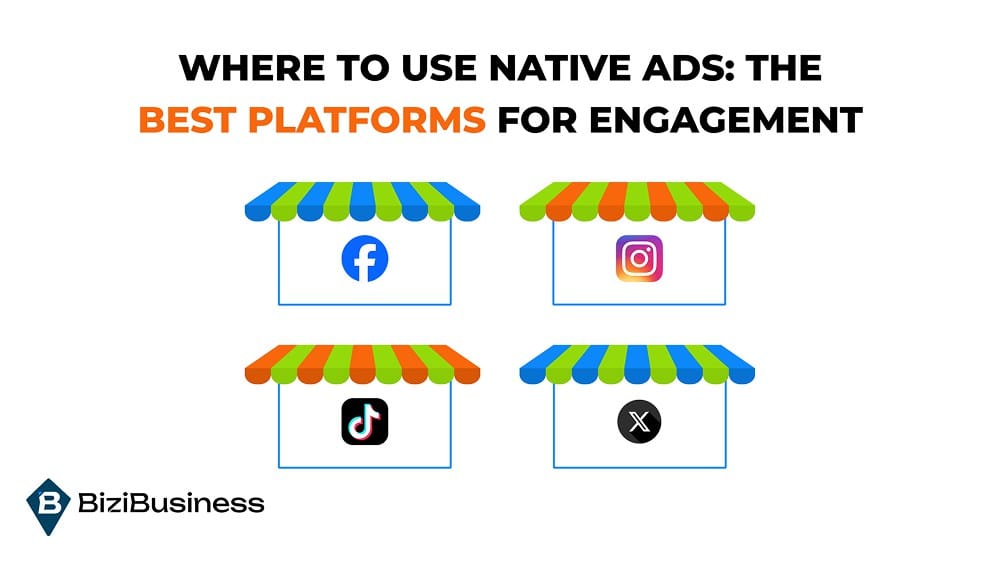
Right message. Right place. Right format.
One of the biggest advantages of native ads is their versatility.
They can appear in social feeds, news articles, video streams, and more—blending seamlessly with the platform’s content.
But here’s the thing:
Not all native ad platforms are created equal.
To get the best results, you need to match your native ad style to the platform and audience.
Let’s break down the best places to use native ads and how to make the most of each one.
Social Media: Where Native Ads Thrive
Social platforms are built for content consumption, making them the perfect environment for native ads.
When done right, native ads here feel like posts from friends or influencers, rather than intrusive promotions.
Best Platforms:
- Facebook: In-feed ads and sponsored stories
- Instagram: Sponsored posts, Stories, and Reels
- TikTok: In-feed video ads and branded challenges
- Twitter: Promoted tweets that mimic organic posts
Tips for Social Media Native Ads:
- Use user-generated content (UGC): Makes the ad feel more authentic.
- Match the platform tone: Keep it casual and relatable.
- Add subtle branding: Logo placements should feel integrated, not forced.
- Engage with comments: Treat your ad like an organic post—respond and interact.
News and Editorial Sites: Blending with Articles
Native ads on news websites often take the form of sponsored content or recommendation widgets. They look like editorial pieces but are clearly marked as sponsored.
Best Platforms:
- Outbrain and Taboola: Content discovery networks that place ads on major news sites.
- Yahoo Native: Integrates seamlessly with news and lifestyle content.
- The New York Times Brand Studio: High-quality, long-form native articles.
Tips for News and Editorial Native Ads:
- Write in a journalistic tone: Mimic the site’s editorial style.
- Focus on storytelling: Use data, expert opinions, and real-world examples.
- Clearly label as sponsored: Trust is key—don’t blur the lines too much.
- Provide value: Think educational content, not just product pitches.
Video Platforms: Content That Flows Naturally
Video native ads work when they don’t interrupt. They should feel like part of the viewer’s content journey.
Best Platforms:
- YouTube: In-feed video ads and sponsored content.
- TikTok: Branded content that matches trending formats.
- Snapchat: Story ads and in-discover content.
Tips for Video Native Ads:
- Keep it short: Aim for 15-30 seconds of highly engaging content.
- Match video style: If the platform favors quick cuts and humor, lean into that.
- Include captions: Many users watch without sound.
- Deliver a story: Hook viewers in the first 3 seconds.
Recommendation Widgets: Subtle Yet Strategic
You’ve probably seen these at the bottom of news articles—suggested reads that are actually ads.
They can be highly effective when contextually relevant.
Best Platforms:
- Outbrain: Delivers content recommendations on premium publisher sites.
- Taboola: Similar, with a focus on increasing content engagement.
- Revcontent: Offers widgets that blend with the publisher’s style.
Tips for Widget Native Ads:
- Use engaging headlines: Focus on curiosity or problem-solving.
- Include eye-catching images: Visuals should match the site’s aesthetic.
- Don’t use misleading titles: Authenticity is critical for maintaining credibility.
Email Newsletters: Native Ads as Recommendations
If done right, native ads within emails can feel like trusted recommendations rather than obvious promotions.
Best Platforms:
- Newsletter Sponsorships: Partnering with popular newsletters in your niche.
- Platform Integrations: Substack and Revue allow for branded content within subscriber emails.
Tips for Email Native Ads:
- Fit the tone of the newsletter: Personal and value-driven.
- Make the offer relevant: Match the ad to the newsletter’s theme.
- Position as a recommendation: The tone should feel helpful, not salesy.
Measuring Success: Key Metrics for Native Ad Campaigns
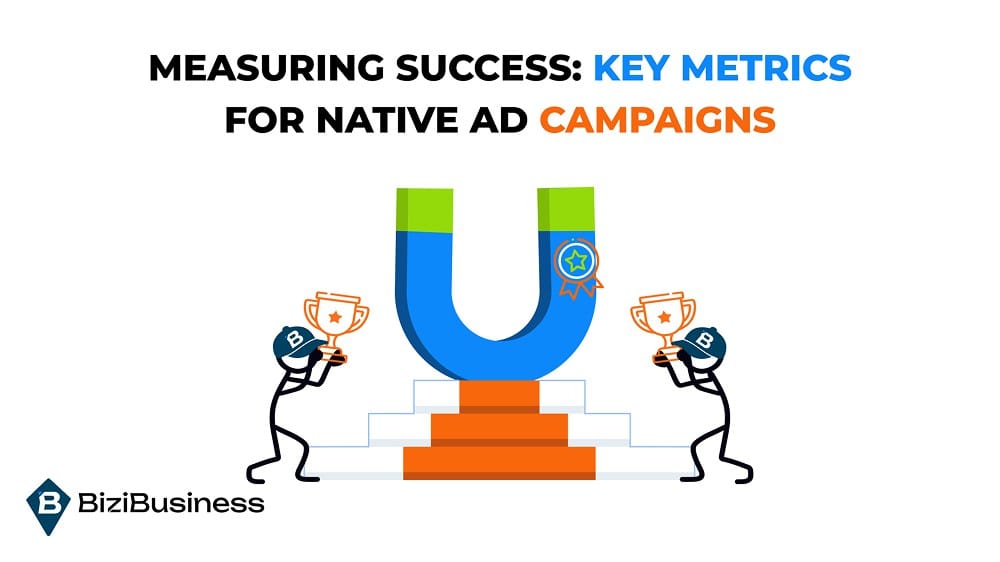
If you’re not measuring, you’re just guessing.
Native ads can feel seamless and authentic, but at the end of the day, they’re still ads—and they need to deliver results.
But measuring native ad success isn’t as straightforward as tracking traditional display ads.
Why?
Because native ads don’t just aim for clicks—they aim for engagement, relevance, and long-term brand impact.
Let’s look at the metrics that actually matter when it comes to native advertising.
1. Click-Through Rate (CTR): How Many People Are Engaging?
CTR is a basic but essential metric that shows how often people click on your ad after seeing it.
It’s a strong indicator of ad appeal and headline effectiveness.
Why It Matters:
- High CTR means your ad is compelling and relevant.
- Low CTR might indicate that the ad doesn’t match the platform or feels too salesy.
How to Improve CTR:
- Test different headlines and visuals.
- Match the ad tone to the platform (e.g., conversational on social media, informative on news sites).
- Use curiosity or value-driven hooks.
2. Engagement Time: Are People Sticking Around?
CTR only tells you that people clicked.
But did they actually stick around and engage?
Engagement time measures how long users interact with your content after clicking.
Why It Matters:
- High engagement means your content delivers on the promise of the headline.
- Low engagement signals that users feel misled or uninterested.
How to Increase Engagement:
- Start with a strong hook that matches the ad.
- Make the content visually appealing and easy to read.
- Break up text with images, quotes, or infographics.
3. Conversion Rate: Are Clicks Turning Into Actions?
Ultimately, your native ad needs to drive action—whether that’s a purchase, sign-up, or download.
Conversion rate measures the percentage of users who take the desired action after engaging with your content.
Why It Matters:
- High conversion means your ad effectively leads to action.
- Low conversion can indicate disconnect between the ad content and the landing page.
How to Boost Conversions:
- Align the landing page with the ad promise—no bait-and-switch.
- Use clear and subtle CTAs that guide the next step.
- Optimize the landing page for mobile, as many native ad clicks come from phones.
4. Cost Per Click (CPC) and Cost Per Action (CPA): Are You Spending Efficiently?
It’s not just about getting clicks—it’s about how much you’re paying for each one.
CPC tells you the cost per click, while CPA tells you the cost per completed action (like a purchase or sign-up).
Why It Matters:
- Low CPC means your ad is both effective and economical.
- High CPA could indicate friction after the click—like a confusing landing page.
How to Lower CPC and CPA:
- Target more precisely—focus on the most relevant audiences.
- Continuously test ad elements (headlines, visuals, CTA).
- Adjust bids and optimize for placements that drive quality traffic.
5. Return on Ad Spend (ROAS): Are You Profiting?
ROAS measures how much revenue you’re making for every dollar spent.
It’s the ultimate metric for determining if your native ad campaign is profitable.
Why It Matters:
- Positive ROAS means your campaign is driving more revenue than it costs.
- Negative ROAS signals that something is off—either the targeting, messaging, or offer.
How to Improve ROAS:
- Focus on high-intent audiences likely to convert.
- Use retargeting to re-engage those who showed interest.
- Test different ad formats to see which drives the highest return.
6. Brand Lift Metrics: Is Your Brand Perception Improving?
Native ads aren’t just about immediate sales—they’re also about building brand awareness and affinity.
Brand lift measures changes in perception after users see your ads.
Why It Matters:
- Positive brand lift means users associate your brand with value and relevance.
- Negative or neutral lift means the ads aren’t resonating emotionally.
How to Measure Brand Lift:
- Conduct surveys asking about brand awareness or perception.
- Use tools like Google Brand Lift to track changes in sentiment.
- Compare brand search volume before and after the campaign.
7. Engagement Rate on Social Media: Are People Interacting?
For native ads on social platforms, it’s not just about clicks—it’s about likes, shares, comments, and saves.
A high engagement rate indicates that users genuinely connect with your content.
Why It Matters:
- High engagement = organic reach and increased visibility.
- Low engagement could mean the content doesn’t resonate with the audience.
How to Increase Engagement:
- Use relatable visuals and authentic storytelling.
- Encourage interaction with questions or polls.
- Reply to comments to keep the conversation going.
Common Mistakes That Ruin Native Ad Campaigns
Sometimes it’s not the idea that’s flawed—it’s the execution.
Native ads can be incredibly effective when done right.
But when done poorly, they can damage your brand, waste your budget, and turn potential customers away.
Why do native ad campaigns fail?
Usually, it’s because they forget the fundamental principle:
Native ads should feel natural, relevant, and valuable.
Let’s break down the most common pitfalls that brands make—and how to avoid them.
Poor Targeting: Showing Up in the Wrong Places
One of the biggest mistakes brands make is casting too wide a net.
Just because native ads can appear on a wide range of platforms doesn’t mean they should.
What Goes Wrong:
- Ads appear on irrelevant sites, leading to low engagement.
- The audience feels disconnected from the message.
- High impressions but low clicks—or worse, clicks without conversions.
How to Fix It:
- Use precise targeting: Leverage demographics, interests, and behavioral data to narrow your audience.
- Choose the right platform: Make sure the platform aligns with your brand and the ad content.
- A/B test placements: See which sites or feeds perform best and focus your budget there.
Misleading Headlines: The Clickbait Trap
People hate feeling tricked.
If your native ad headline promises one thing but delivers another, you lose credibility—and customers.
What Goes Wrong:
- High CTR but low engagement or conversions.
- Users feel duped and associate your brand with dishonesty.
- Your content doesn’t match the excitement of the headline.
How to Fix It:
- Be honest and clear: Your headline should accurately reflect the content.
- Set the right expectations: Use curiosity without being deceptive.
- Test different headline tones: See what drives clicks and engagement.
Being Too Salesy: Pushing Instead of Engaging
Native ads should feel like content, not a hard sell.
If your ad screams “Buy now!” it breaks the natural flow and feels intrusive.
What Goes Wrong:
- Users immediately recognize it as an ad and scroll past.
- The ad feels out of place on content-focused platforms.
- Low CTR and poor brand perception.
How to Fix It:
- Lead with value: Start with a story, insight, or problem-solving angle.
- Subtle CTAs: Use phrases like “Learn more” or “Discover how” instead of direct sales pitches.
- Position as a recommendation: Make it feel like helpful advice, not a pushy offer.
Neglecting Mobile Optimization: Killing the Experience
Most native ad clicks come from mobile devices.
If your landing page isn’t mobile-friendly, you’re losing conversions before the page even loads.
What Goes Wrong:
- Slow load times lead to high bounce rates.
- Text is too small or images don’t render properly.
- Complex forms frustrate users on smaller screens.
How to Fix It:
- Responsive design: Make sure your landing page adapts to different screen sizes.
- Fast load times: Compress images and minimize scripts.
- Simple CTAs: Use big, clickable buttons optimized for touch.
Not Matching the Platform’s Tone and Style
Every platform has its own unique culture and style.
If your ad feels out of place, it’s obvious—and ineffective.
What Goes Wrong:
- A formal, corporate ad on a casual social platform.
- Overly polished visuals on a site known for raw, authentic content.
- Inconsistent tone compared to the organic posts around it.
How to Fix It:
- Research the platform: Understand the typical content and user expectations.
- Adapt your language: Be conversational where it’s expected, and professional where it fits.
- Match the visuals: Use images and videos that blend with native content.
Failing to Disclose Sponsorship: Breaching Trust
Trying to “hide” the fact that your native ad is sponsored is not only unethical—it’s bad for business.
When users feel tricked, they’re less likely to trust your brand.
What Goes Wrong:
- Backlash when users realize it’s a paid ad.
- Decreased trust and negative sentiment.
- Potential legal issues (platform policies often require disclosure).
How to Fix It:
- Be transparent: Clearly label your content as “Sponsored” or “Paid Partnership.”
- Use soft language: Instead of “Advertisement,” try “In partnership with [Brand].”
- Follow platform guidelines: Make sure you’re compliant with disclosure rules.
Ignoring Analytics: Missing What Actually Works
Native ad campaigns aren’t set-and-forget.
If you’re not tracking performance, you’re essentially flying blind.
What Goes Wrong:
- You keep running ads that aren’t delivering results.
- Missed opportunities to optimize high-performing content.
- Wasting budget on ineffective placements or messages.
How to Fix It:
- Set clear KPIs: CTR, engagement time, conversions, ROAS.
- Use analytics tools: Track performance across platforms to identify what’s working.
- Iterate and optimize: Drop what’s underperforming and scale what works.
Crafting Native Ads That Don’t Feel Like Ads
The secret to native ad success? Stop trying to trick people.
Native advertising isn’t about fooling your audience.
It’s about creating content that blends seamlessly with their online experience while still delivering your message.
When native ads feel natural, they engage.
When they feel forced or deceptive, they repel.
In a world where audiences are increasingly ad-blind, the brands that win are those that respect their audience’s experience.
Subscribe to Newsletter
Unlock your creativity and stay up to date on marketing tips
